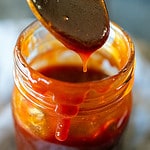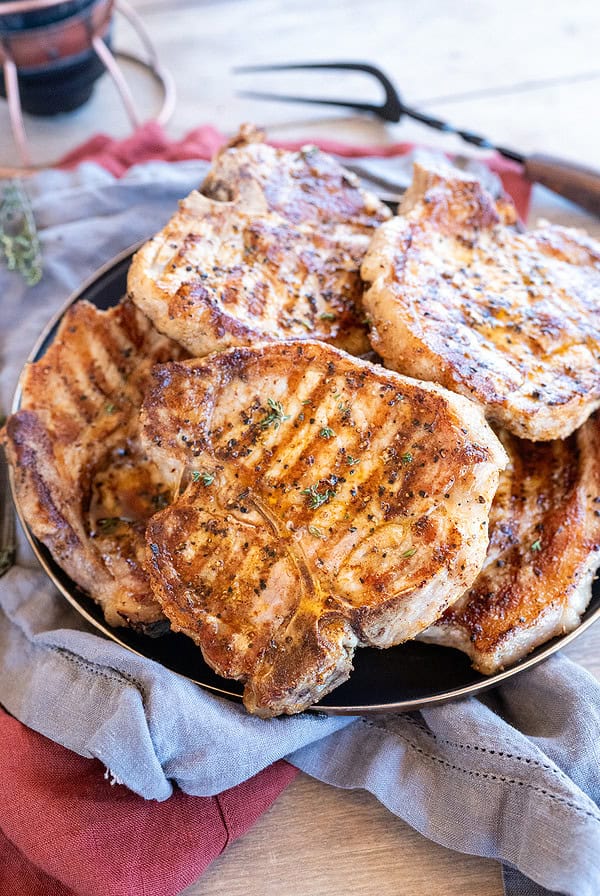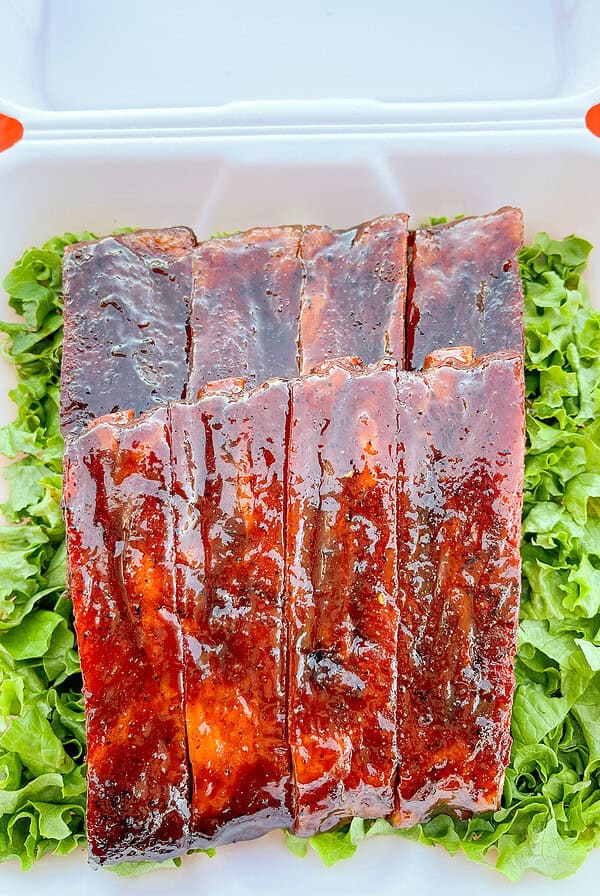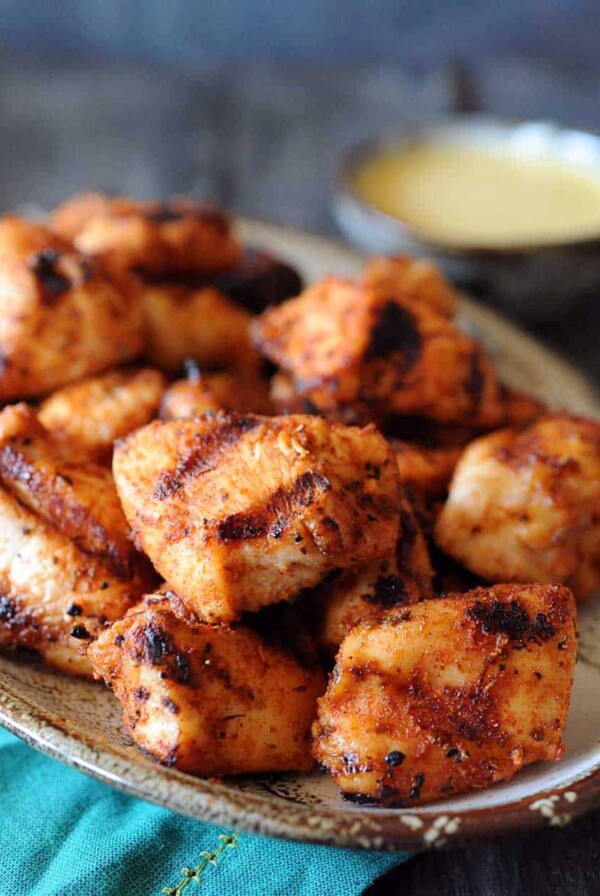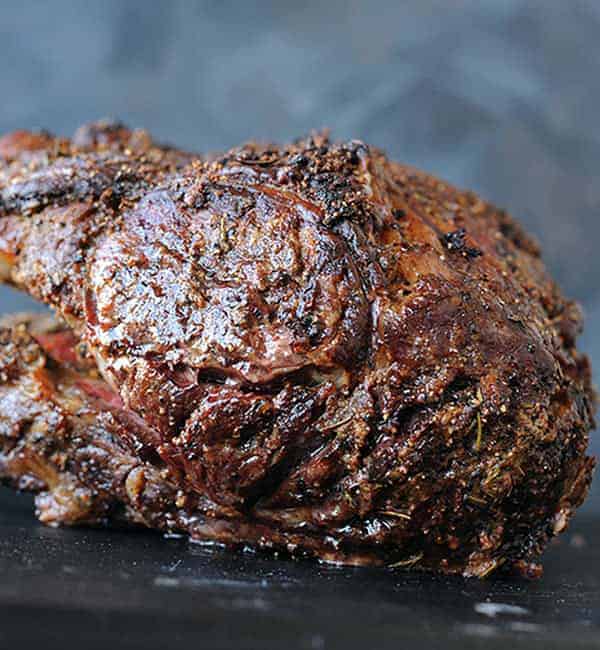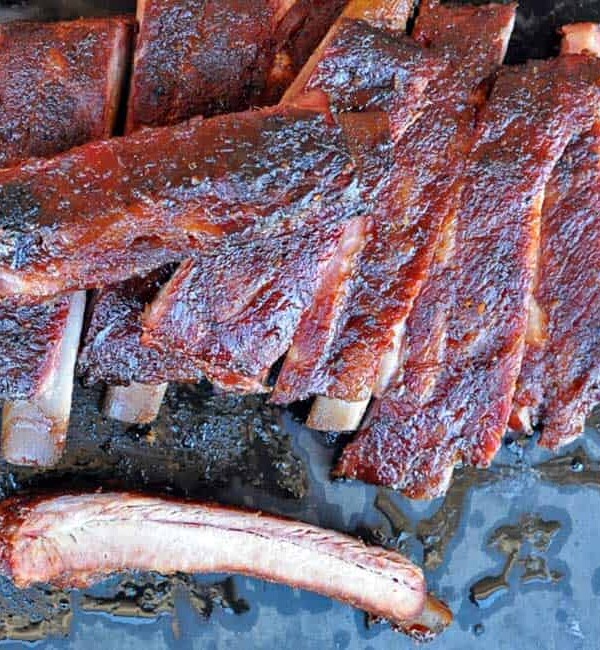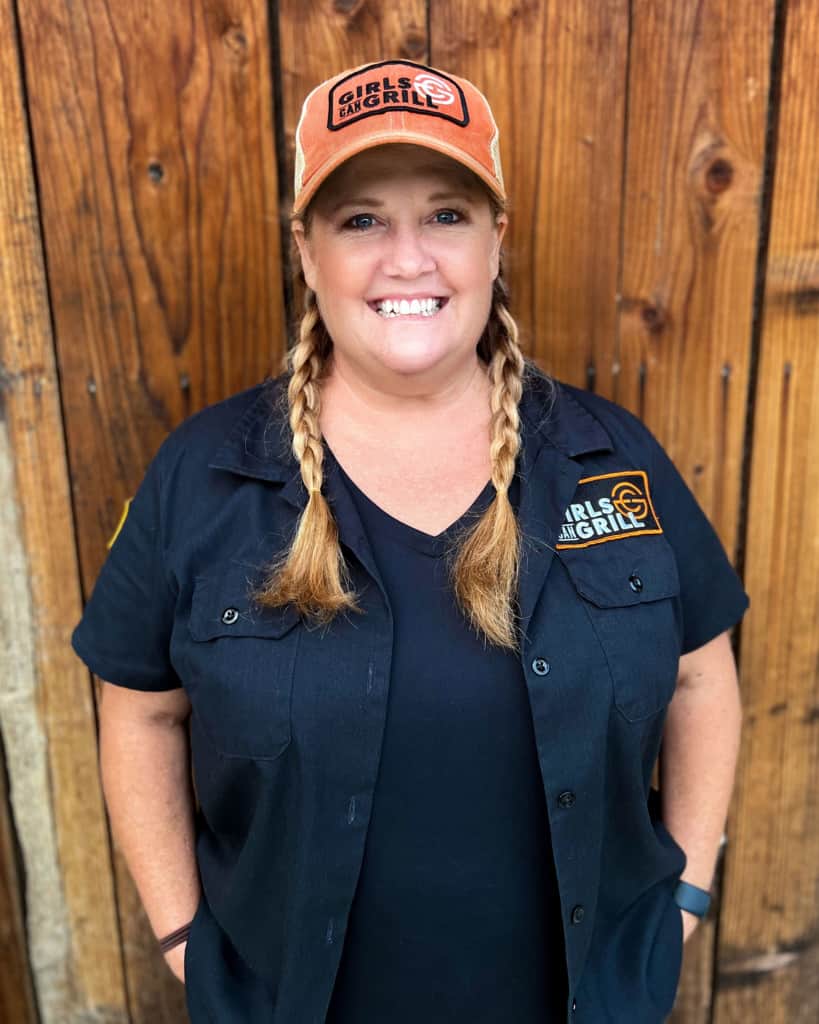Whether heading to a BBQ competition or smoking up barbecue in the backyard, this easy homemade BBQ sauce recipe is a quick way to make your BBQ even more special and personal.
Once you master the foundation of the recipe, play around with other flavors to make it your own.
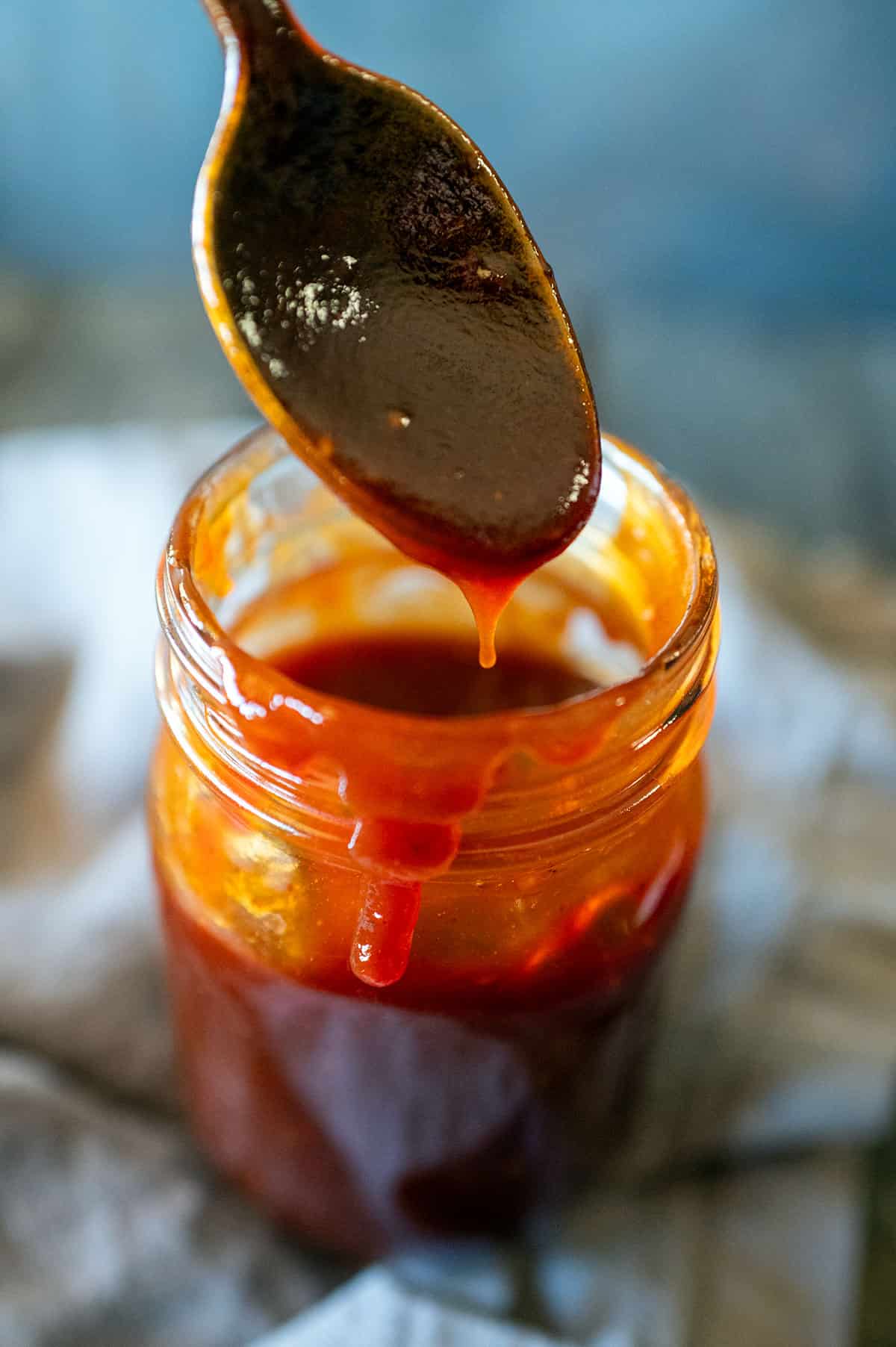
Save this BBQ Tip
Enter your email, and I’ll send this link directly to your inbox. Plus, you’ll get new BBQ recipes and tips weekly.
Table of Contents
Why this homemade BBQ sauce recipe
There are a lot of barbecue sauce recipes out there, so it’s hard to know which one is the best BBQ sauce. There are four primary reasons why you should try this recipe:
- It’s a perfect balance of sweet and tang
- It’s an extremely easy recipe to make
- It has a smooth, non-gritty texture
- It’s award-winning
This recipe resembles a Kansas City-style sauce. It’s ketchup based and includes sugar and molasses, so it leans on the sweeter side. But it’s very balanced because of the vinegar and spices that are used.
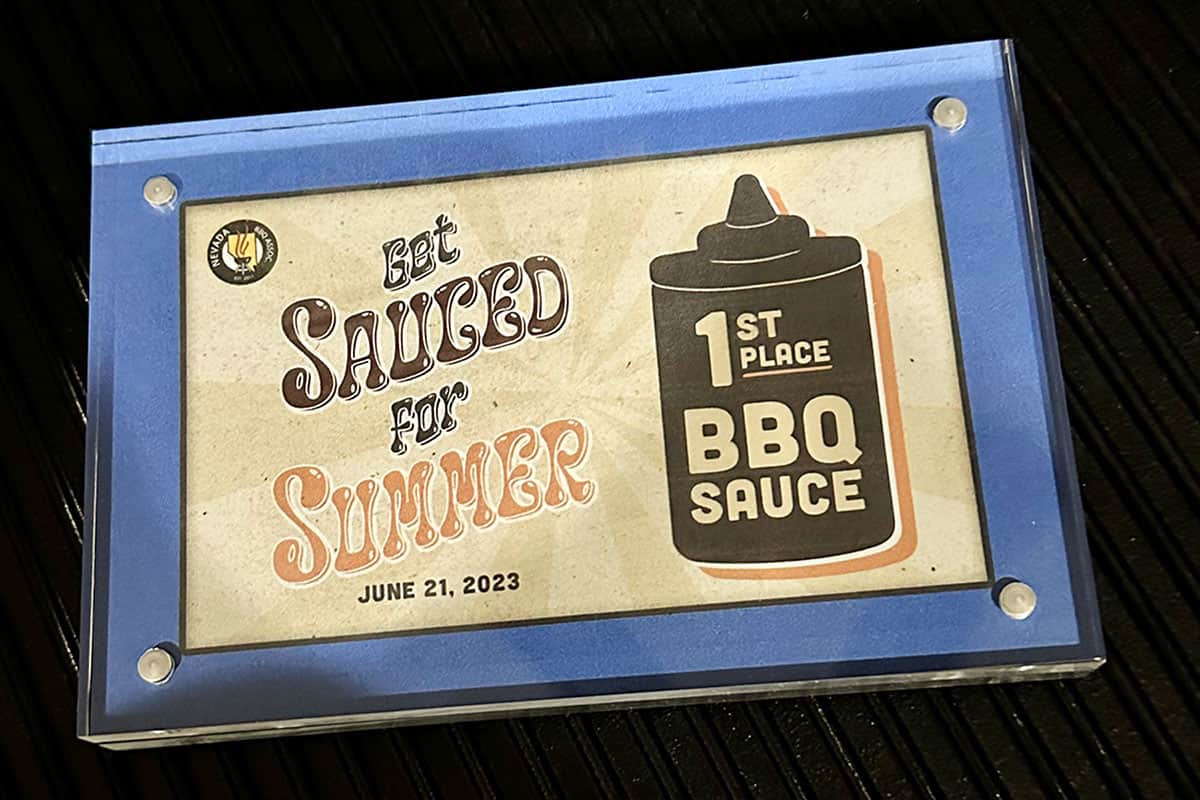
Many recipes are made with sautéed onions and garlic. While those add flavor, it takes more time, creates a chunkier texture and adds fat, which isn’t needed in barbecue sauce.
Some recipes out there have a gritty texture. That’s because the spices aren’t introduced properly. Great barbecue sauce should be smooth and not gritty.
With this recipe, my award-winning Pork Rub is steeped in vinegar. This allows the rub’s onion, peppers, chiles and spices to dissolve, making the sauce smoother than others.
I have entered this sauce into multiple competitions. In 2023, it tied for 10th place at the Jack Daniel’s World Championships and received first place in the Nevada BBQ Association Get Sauced for Summer contest. It also won second place at the Starbase BBQ Battle in Las Vegas in 2021.
Once you master the base of this sauce, you can adapt it to your personal taste by adding a splash of whisky, hot sauce or other flavors or sweeteners.
Ingredients
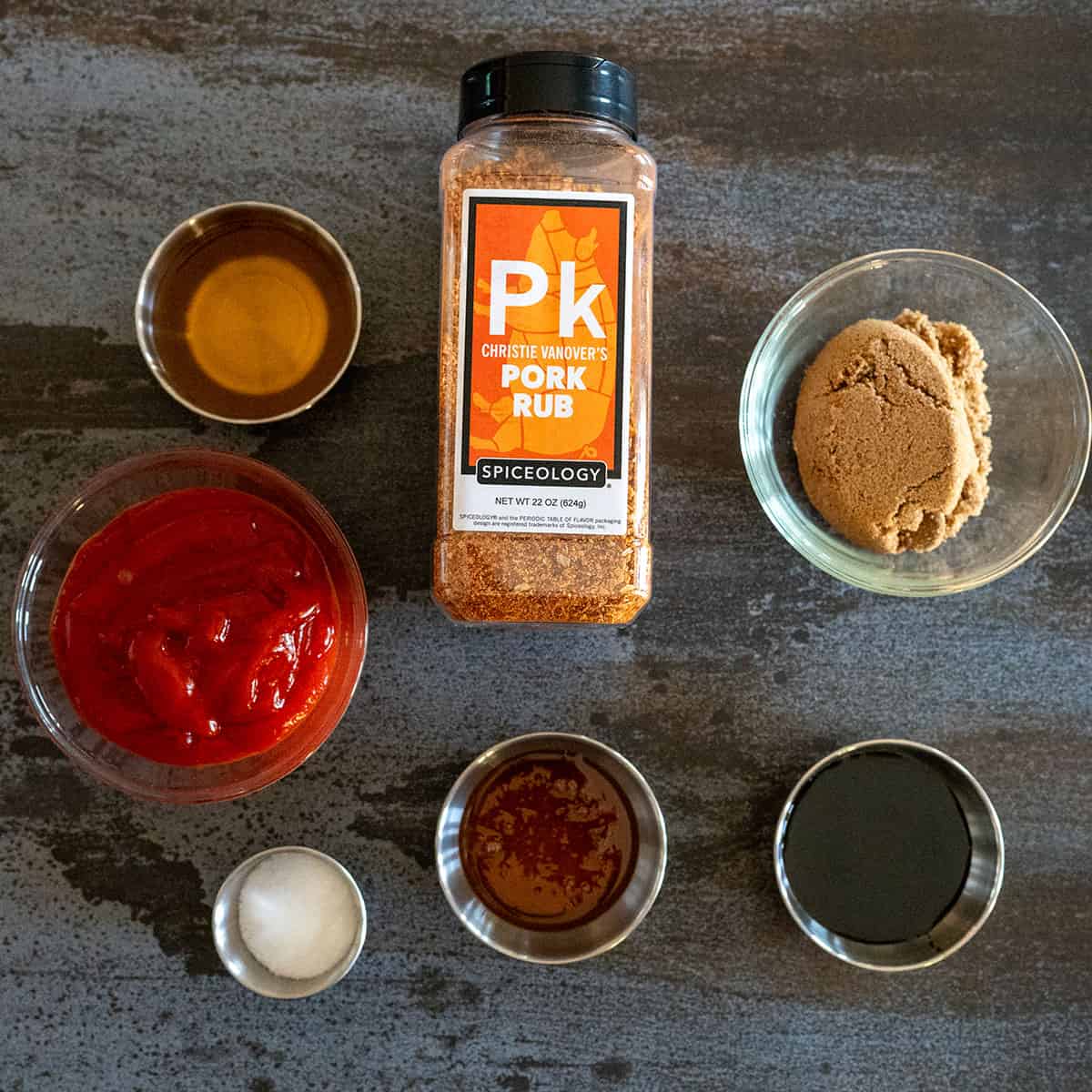
- Apple Cider Vinegar: This type of vinegar provides tang and a little sweetness because it’s made by fermenting apples.
- Rub: I use my award-winning Pork Rub in my sauce because it’s sweet with chiles and spices.
- Ketchup: The tomato base for red BBQ sauce is ketchup. Use your favorite brand.
- Brown Sugar: I use dark brown sugar for added sweetness and richness, but you can also use light brown sugar.
- Molasses: Blackstrap molasses is a rich dark sugar-based syrup that is more tart than honey or maple syrup.
- Honey: For mild, smooth sweetness, add your favorite honey.
- Salt: Finally, to round out the sauce, add a pinch of kosher salt.
Substitutions: Instead of using my pork rub, you can use your favorite store-bought or homemade barbecue rub. If you like spicy BBQ sauce, add cayenne pepper or hot sauce. For more umami, add a splash of soy sauce or Worcestershire sauce.
See the full recipe card below for servings and a full list of ingredients.
How to make homemade barbecue sauce
- STEP ONE: Place the apple cider vinegar and pork rub in a medium saucepan. Bring to a boil. Then, reduce to low and let simmer for 15 minutes. This will allow the spices and herbs in the rub to fully dissolve into the vinegar, which makes the sauce richer.
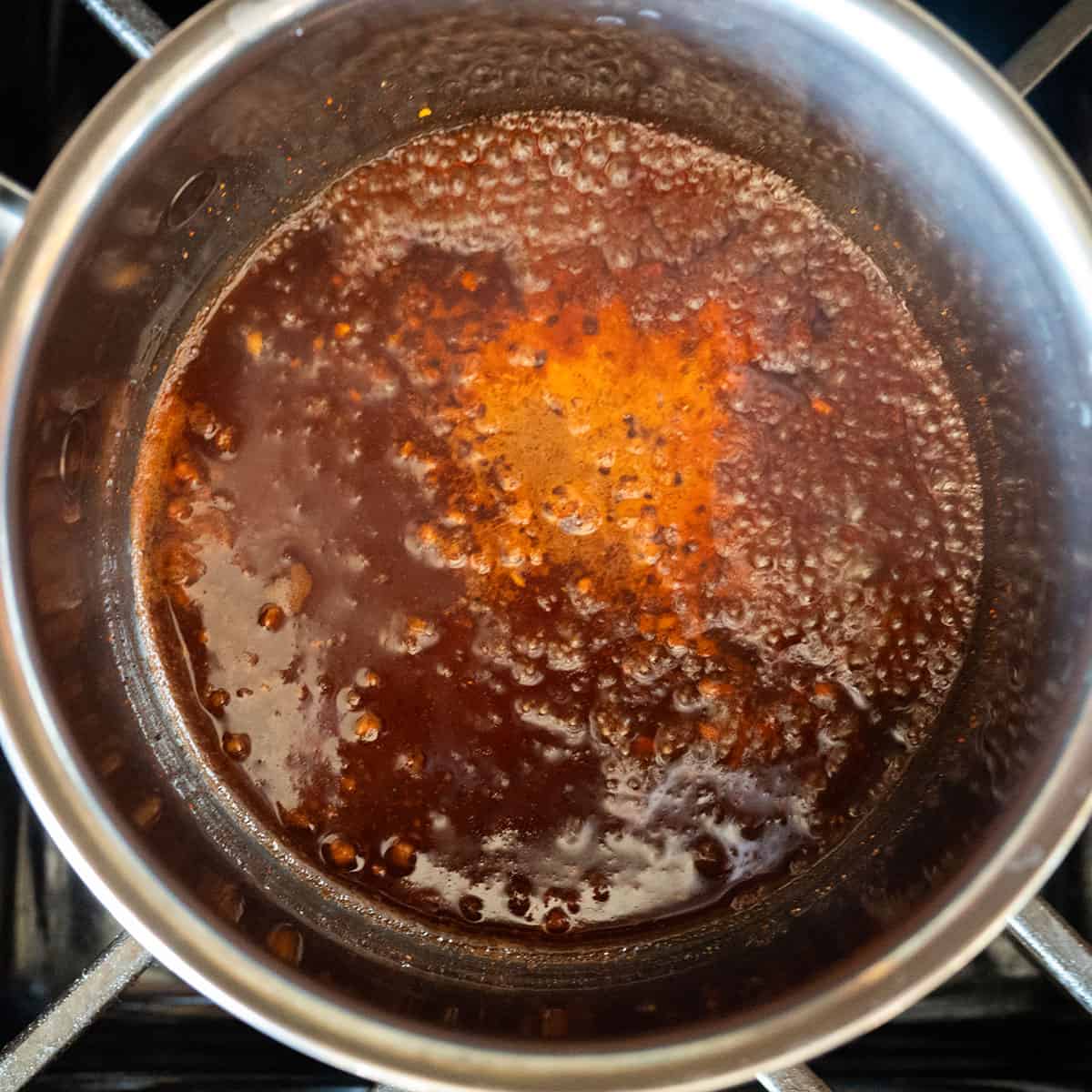
- STEP TWO: Add the remaining ingredients to the pot.
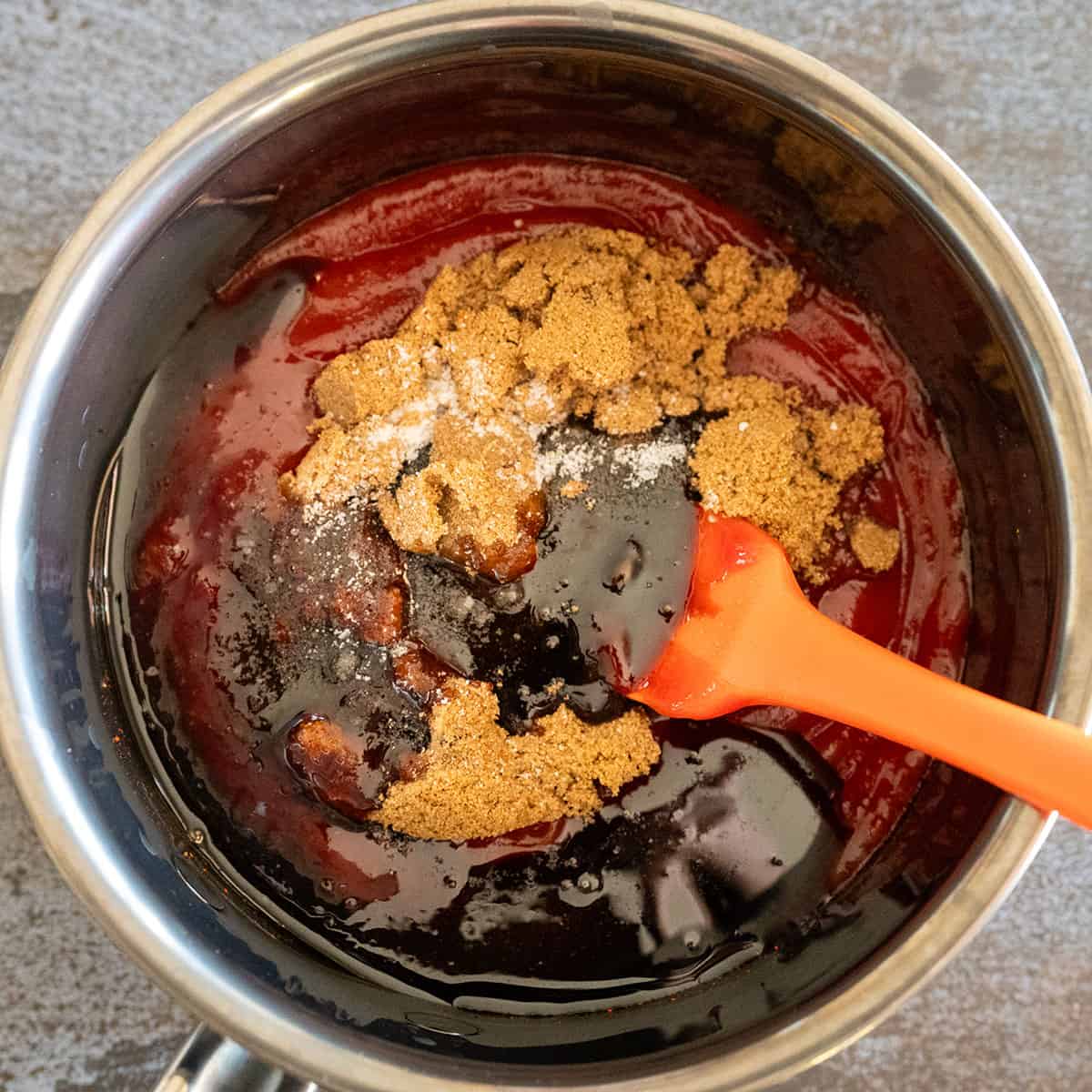
- STEP THREE: Simmer on low heat for 30 minutes, so the sugar fully melts and the flavors cook together.
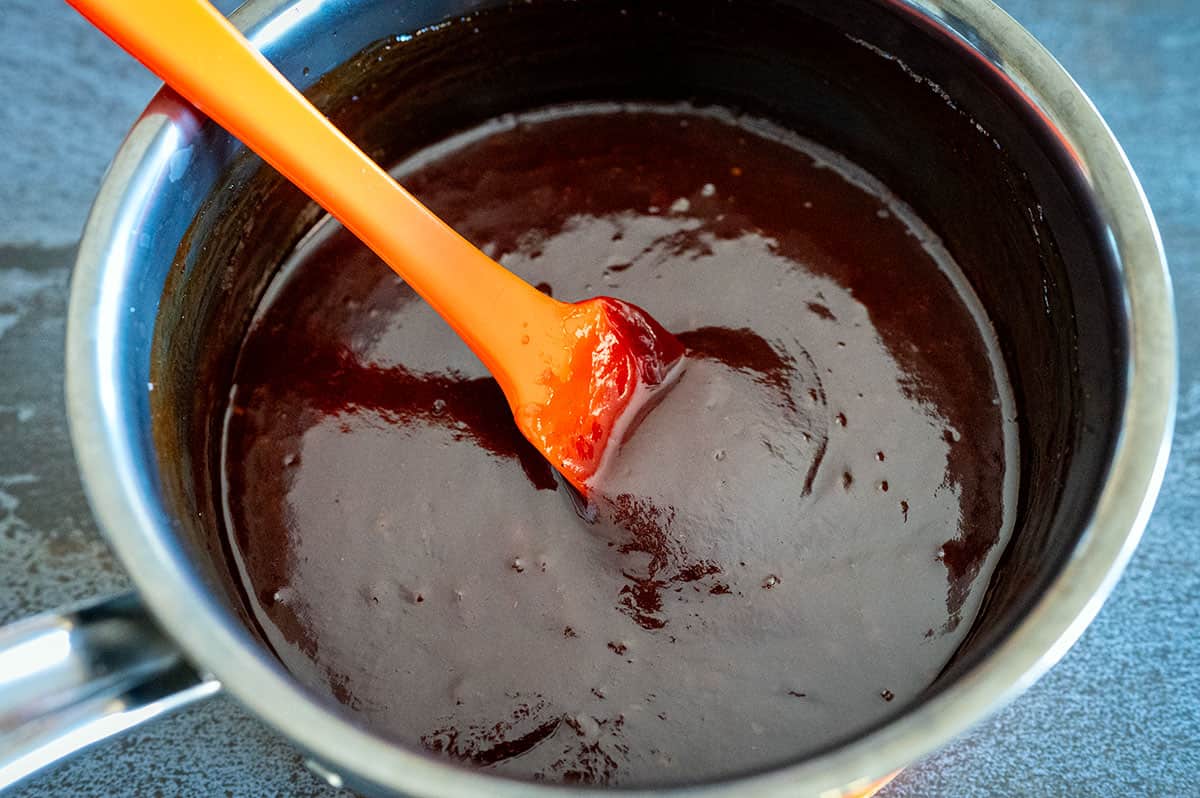
How to use homemade BBQ sauce
This homemade barbecue sauce recipe is great on all kinds of barbecued meat. When using sauce, be sure to wait to baste it onto the meat toward the end of cooking.
If you brush it on too early, the sugars in the sauce will cook to quickly and possibly burn before the meat has finished cooking.
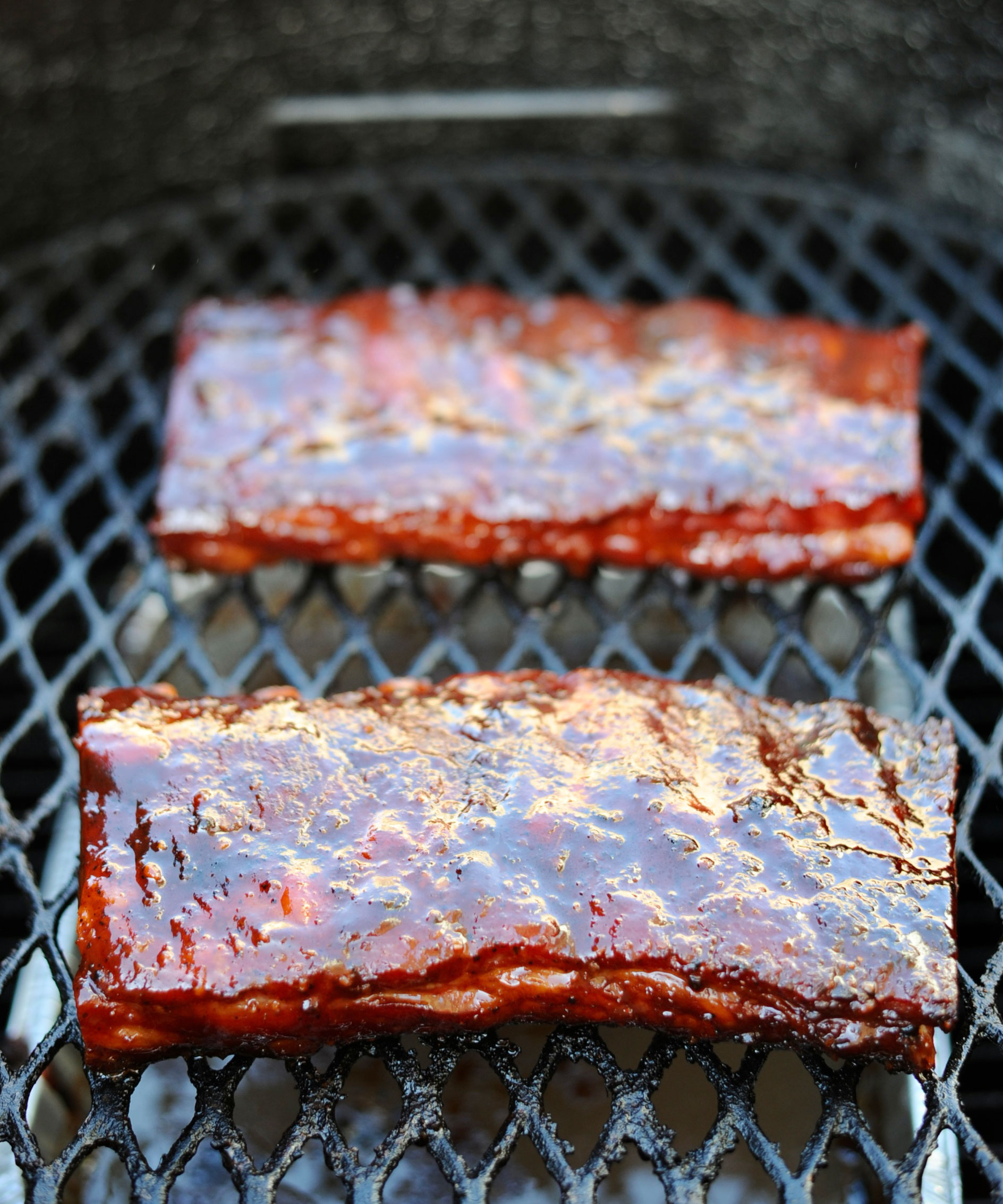
You’ll notice this recipe doesn’t include liquid smoke. That’s because it will get its smoky flavor naturally when you use it on your grill or smoker.
The sauce can also be served on the side as a dipping sauce or spread onto BBQ chicken pizza instead of pizza sauce with shredded cheese, pulled chicken, bacon and red onions.
This barbecue sauce is both sweet and tangy. It’s great on smoked ribs, whole chicken and pulled pork.
Storage
After making your barbecue sauce, either use it right away or let it cool to room temperature. Then, you can store it in a mason jar, squeeze bottle or other airtight container in the refrigerator. It will last in the refrigerator for 2-3 months.
If you’re into canning, you can also can barbecue sauce in a water canner to preserve it. Unopened properly canned sauce will last in the pantry for 9-12 months.

GCG Pro Pitmaster Tips
- Allow the herbs and spices to steep in vinegar for the best flavor
- Cook the sauce for 30 minutes for added richness
- Use barbecue sauce toward the end of your cook
- Let the sauce fully cool before storing
Frequently Asked Questions
If you properly can barbecue sauce to preserve it, it can last unopened in the pantry for 9-12 months. If you don’t can it, you should store it in the refrigerator.
Red-based, Kansas City barbecue sauce usually contains ketchup, vinegar, different sweeteners and herbs and spices. Carolina BBQ sauce is mustard or vinegar-based, and Alabama BBQ sauce is mayonnaise based.
Store-bought sauces are easy and there are a lot of good choices out there, but when you make your own BBQ sauce, you get to control the quality of the ingredients, and you can adjust the flavor to your liking.
If you like sweet flavors, add more brown sugar or honey. If you like a more tangy flavor, add more vinegar. Also, it takes less than an hour to make your own sauce, so you can prepare it while your meat is smoking.
More sauce recipes
Great recipes that use this homemade sauce
- Quick & Juicy Grilled Pork Tenderloin
- Perfectly Smoked Chicken Wings
- Pulled Pork Sliders on a Ninja Grill
Newest Recipes
Want even more great grilling recipes and tips? Subscribe to my newsletter and follow me on Facebook, Instagram and TikTok for my latest grilling adventures. If you make a recipe, please leave a comment and rating below.
Save this BBQ Tip
Enter your email, and I’ll send this link directly to your inbox. Plus, you’ll get new BBQ recipes and tips weekly.
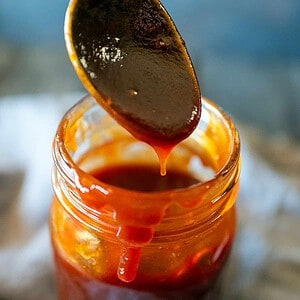
Award-Winning Homemade BBQ Sauce
Ingredients
- 1/4 cup apple cider vinegar
- 1 tbsp Christie Vanover's Pork Rub
- 1 cup ketchup
- 3/4 cup brown sugar
- 2 tbsp honey
- 2 tbsp molasses
- 1/4 tsp kosher salt
- 1/4 tsp garlic salt
- 1/4 tsp MSG, optional
Instructions
- Steep Vinegar: Place the vinegar and pork rub in a sauce pot over medium-low heat. Bring to a simmer. Reduce heat to low and let steep for 15 minutes.
- Simmer Sauce: Add the remaining ingredients to the sauce and let simmer on low heat for 30 minutes, stirring occasionally.
Notes
Variations
To add a smoky flavor, add 1/2 teaspoon of liquid smoke during the simmer stage. To turn this into a whisky BBQ sauce, simmer 1 tablespoon of whisky with 2 tablespoons of maple syrup. Then, stir that into the rest of the sauce and simmer.Nutrition
Nutrition information is automatically calculated, so should only be used as an approximation.
